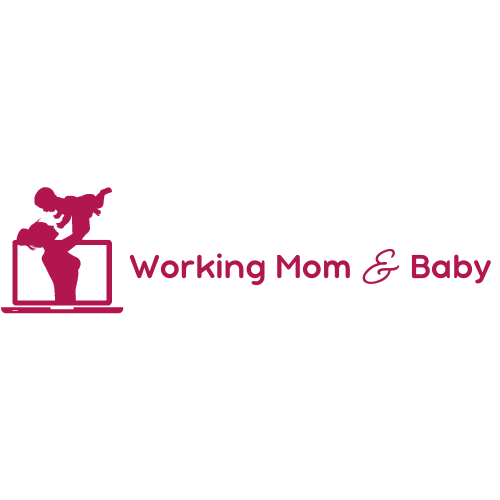Starting daycare is a big step for both toddlers and parents. It can bring a mix of relief, guilt, anxiety, and hope.
You want your child to be safe, happy, and well cared for while you’re at work.
But what happens when things don’t go smoothly?
Your toddler cries every morning.
You hear about biting or tantrums.
Or maybe your once-easygoing child becomes clingy and upset after pick-up.
Sound familiar?
If so, you’re not alone. Daycare issues with toddlers are common. And honestly, they’re totally normal.
The good news is, most of these problems are temporary. And there are ways to help your child adjust without losing your peace of mind.
Let’s talk about what’s going on behind these behaviors and how you can work through them step by step.
Related Reading: How I Survived My Baby’s First Day of Daycare (And You Can Too)
Common Daycare Issues with Toddlers
1. Separation Anxiety
This is probably the most common and heartbreaking one.
Your toddler clings to you. Cries when you leave. Maybe even screams at the door.
It’s not because they don’t like daycare. It’s because you’re their safe space.
Toddlers thrive on routine and familiarity. And when you leave, it feels like their world flips.
💡 What helps:
Create a short, loving goodbye ritual. Stick to it every day.
It could be a special hug, a “see you after snack!” phrase, or a wave from the window.
Consistency builds trust.
2. Napping Difficulties

Your toddler naps great at home, but at daycare? Not so much.
This is super common. A new environment, different noise levels, and new caregivers can be challenging. Also, not every toddler adjusts to group nap times right away.
💡 What helps:
Ask the daycare about their nap routine. You can bring your toddler a comfort item like a blanket or stuffed animal.
Help your child practice sleeping in a similar setup at home, if possible.
Related Reading: No Naps, No Peace? What to Do When Daycare Sleep Fails
3. Tantrums and Big Emotions
You pick up your toddler, and suddenly they’re throwing wild tantrums.
Or they’re more emotional at home after daycare than usual.
This is often due to emotional fatigue.
They’re working hard all day to adjust, follow rules, and be “on.” When they’re finally back with you, they let it all out.
💡 What helps:
Offer lots of connection time after daycare. Cuddles, calm play, or even just a quiet walk can help them reset emotionally.
Related Reading: The Call No Mom Wants: “Your Toddler Hit Someone at Daycare Today!”
4. Not Eating Well at Daycare

Some toddlers eat less (or hardly at all) during the day at daycare.
They might not like the food, be distracted by new surroundings, or feel anxious.
💡 What helps:
Talk to your provider about what your child eats and what they refuse. Share successful meal routines from home.
Some toddlers eat more once they feel more comfortable. This often gets better with time.
Related Reading: Your Baby Won’t Eat at Daycare? You’re Not Alone—Try These 5 Mom-Approved Tips
5. Regression in Behavior or Potty Training
Toddlers who were previously potty trained might have accidents.
Others may suddenly want to use a pacifier again or struggle with bedtime.
These regressions can be frustrating. But they’re a normal response to big changes. Toddlers are trying to cope and find comfort in familiar behaviors.
💡 What helps:
Stay patient and keep routines consistent at home. Offer reassurance without pressure.
Most regressions are short-term and resolve once your toddler feels more secure.
How Long Does It Take for a Toddler to Adjust to Daycare?
There’s no one-size-fits-all answer, but in general, most toddlers take 2 to 6 weeks to fully adjust to daycare.
Some may settle in faster. While others need more time. This varies based on their personality, age, past caregiving experiences, and the daycare’s environment.
It’s normal for your child to still cry at drop-off in the first few weeks, even if they have a good day once you’re gone.
What matters most is consistency, trust, and support.
Signs of adjustment include:
- Calmer goodbyes
- Improved eating/napping at daycare
- More excitement or positive talk about daycare activities
If your toddler is very upset for weeks or shows a lot of regression, it’s fine to reach out to your daycare provider or pediatrician for support.
Related Reading: How Daycare Can Boost Your Child’s Development—Every Parent Should Know This!
What You Can Do to Support Your Toddler’s Daycare Transition
Here are a few simple ways to ease the adjustment and reduce daycare stress:
Create a consistent morning routine
Routines give toddlers a sense of control. Keep mornings calm, predictable, and positive.
Validate their feelings
If they cry or act out, don’t dismiss it.
Say things like, “It’s okay to miss Mommy,” or “You’re feeling sad because daycare is new, and that’s totally normal.”
Stay confident and calm at drop-off

Toddlers pick up on your emotions. If you seem nervous or guilty, it can increase their anxiety too.
Talk about daycare positively
Ask about their favorite toys or teachers. Read books about daycare at home. Frame it as a fun place where they’ll make new friends.
Give lots of snuggles and connection at pick-up
Even a few minutes of quality time after daycare helps your toddler feel safe, loved, and grounded.
You’re Not Failing—You’re Adjusting
If daycare has been tough lately, please know:
You’re not a bad mom.
Your toddler isn’t “behind.”
You’re both going through a transition. And transitions are messy, but they’re temporary.
The early bumps in the road are just part of the journey. With a little time, support, and patience, most toddlers adjust beautifully.
You’re doing your best. And that’s more than enough.
If you found this post helpful, you’ll love our other resources for busy moms. Check out more articles on WorkingMomAndBaby.com.

